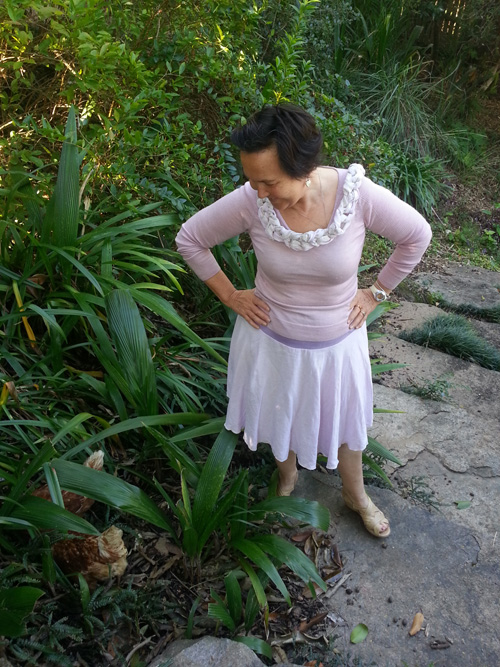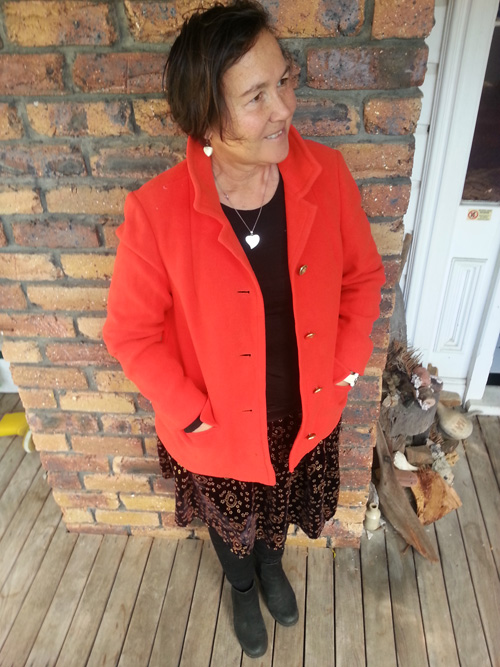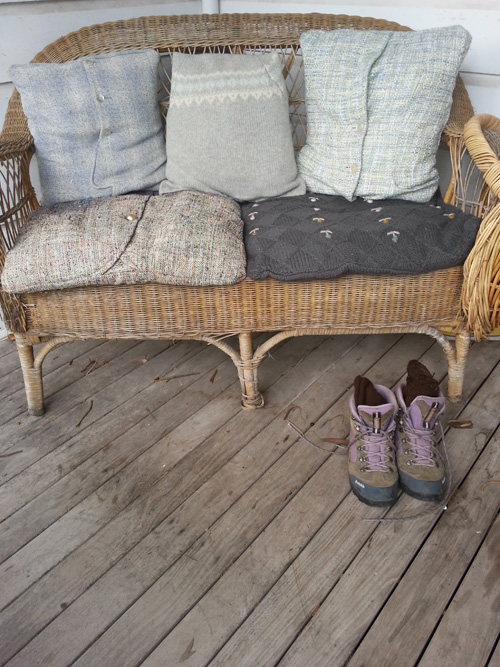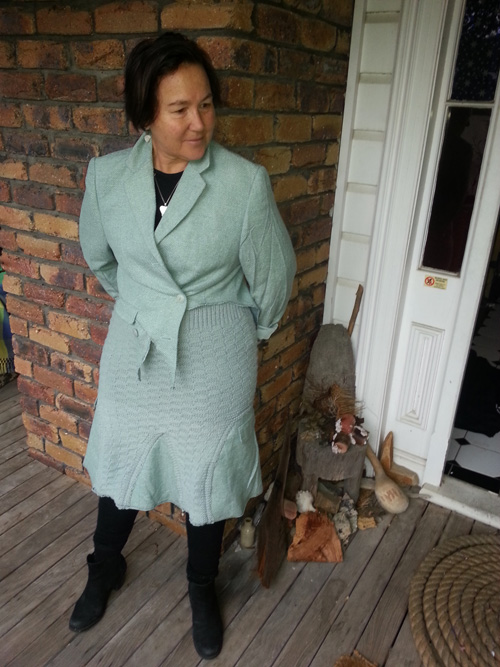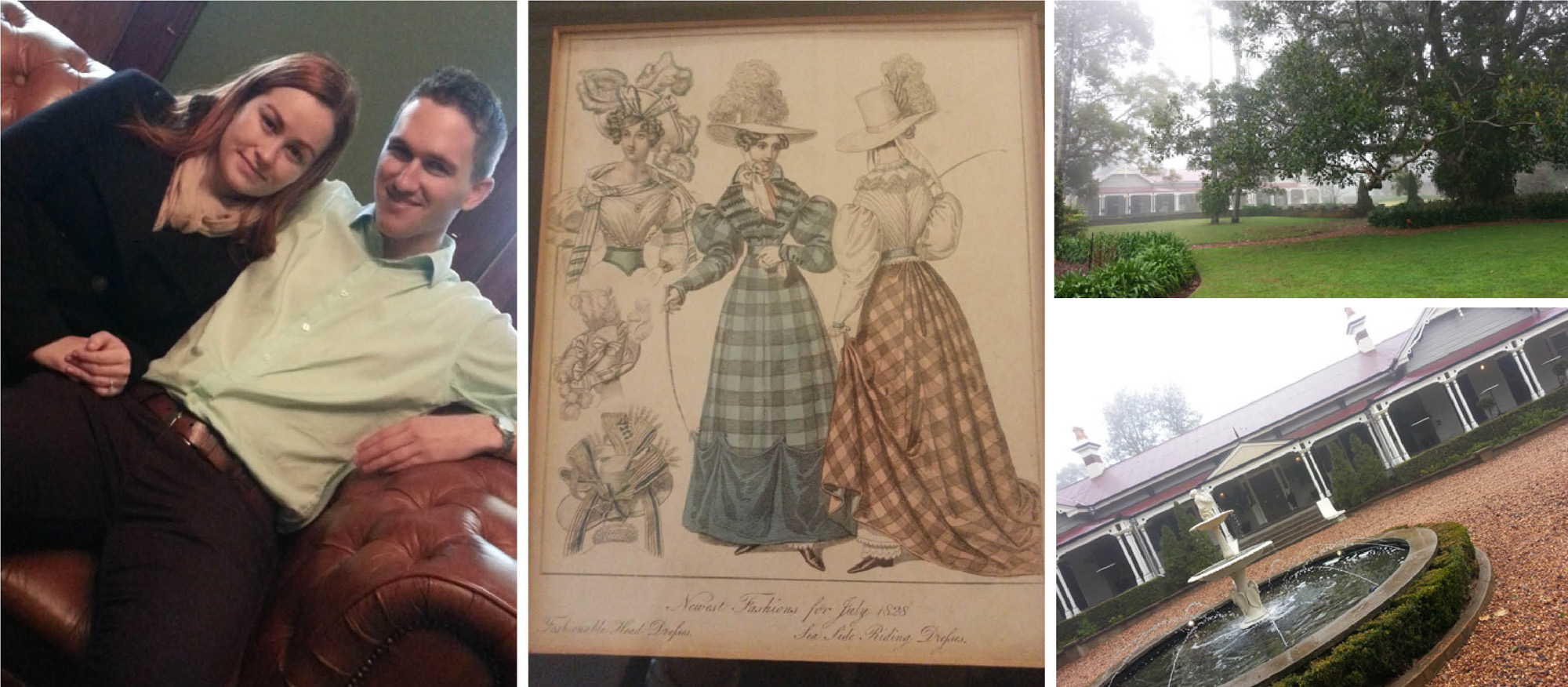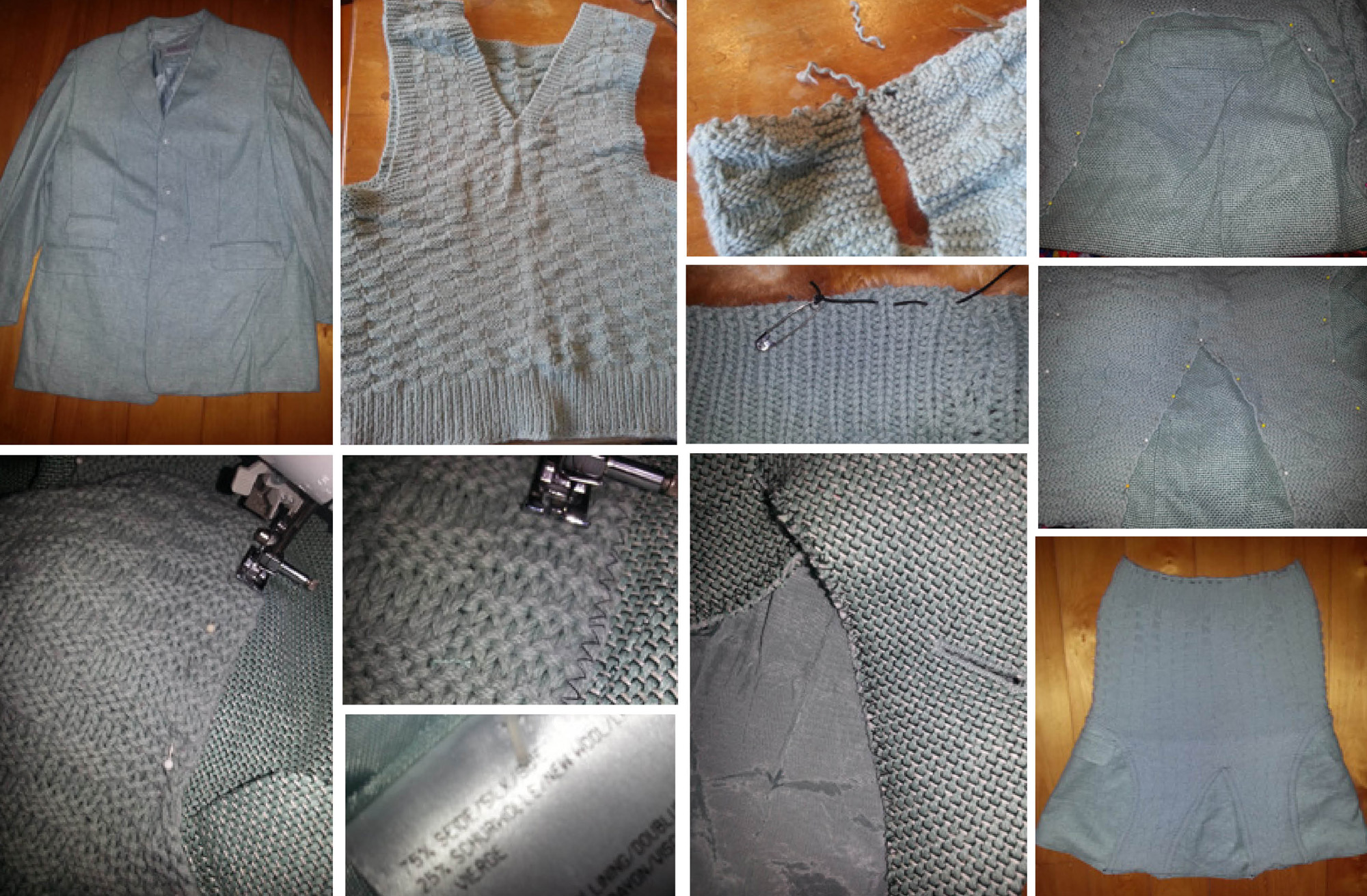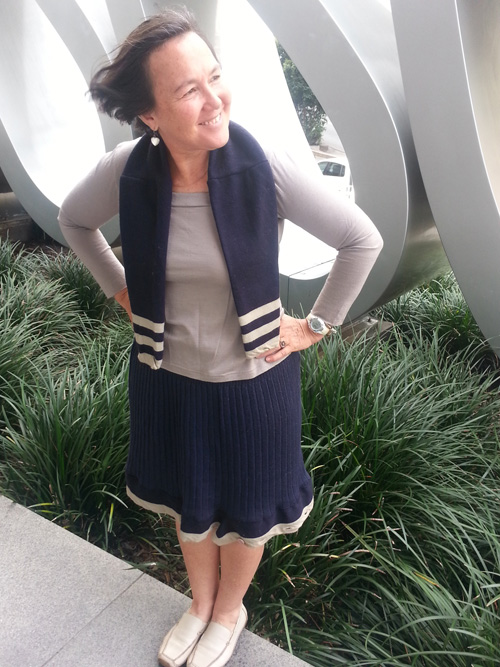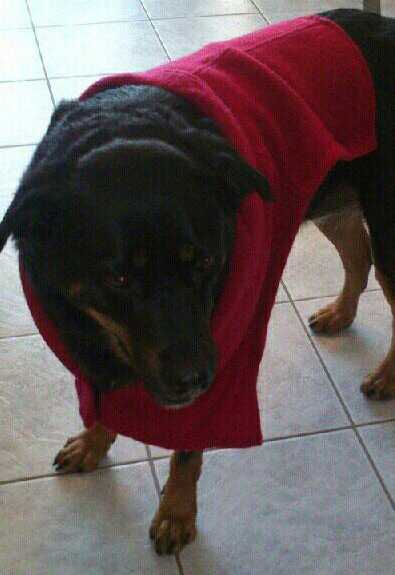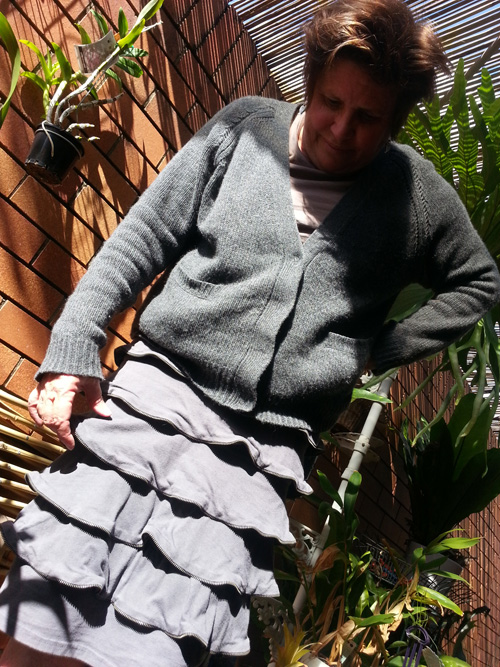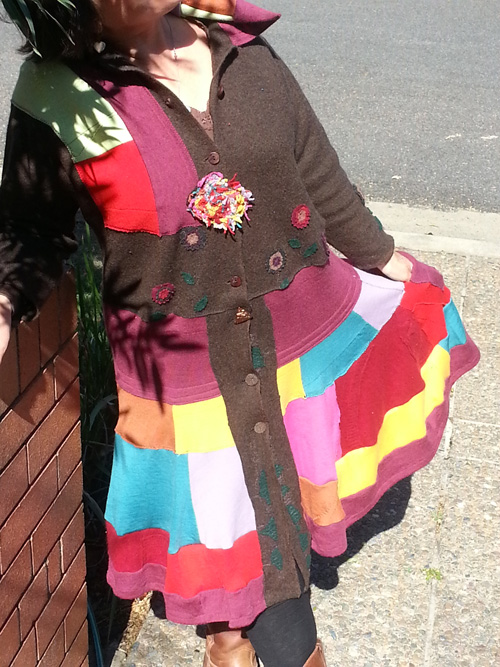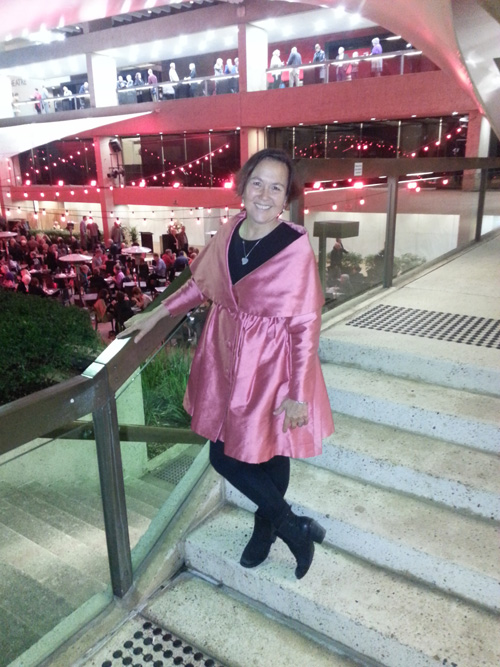 My opshop habit has re-sourced garments for every occasion, including this $10 number which served me well at an earlier Governor’s Reception and last night to the Lyric Theatre.
My opshop habit has re-sourced garments for every occasion, including this $10 number which served me well at an earlier Governor’s Reception and last night to the Lyric Theatre.
The Last Confession starring David Suchet as Cardinal Bellini was incredible theatre about power, leadership and choices – and I had the opportunity to see it thanks to QPAC and my friend Liliana Molina.
At intermission, when a generous lady complemented me on my outfit (deeply envious were her words) I happily confessed it was op shop because its time for clothing reuse to came out of the closet and be mainstream. The dress is beautifully finished (dressmaker unknown as no label) which I found all askew in the dress-up section of an op shop and I bought it for the dupion silk fabric – only realising its full potential when I tried it on at home. Continue reading
